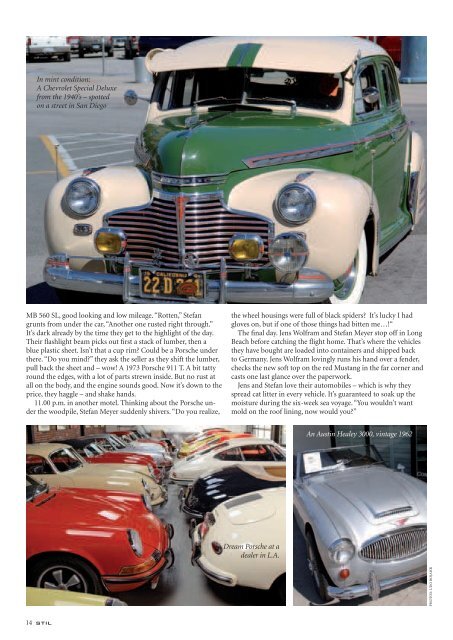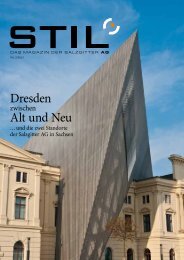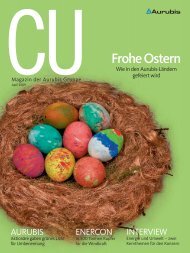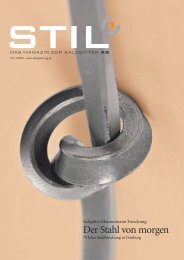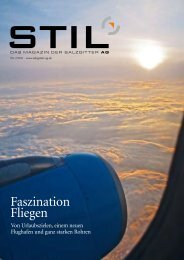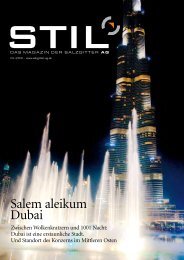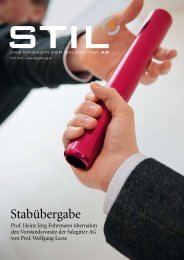Dr. Heinz Jörg Fuhrmann - Schau Verlag Hamburg
Dr. Heinz Jörg Fuhrmann - Schau Verlag Hamburg
Dr. Heinz Jörg Fuhrmann - Schau Verlag Hamburg
You also want an ePaper? Increase the reach of your titles
YUMPU automatically turns print PDFs into web optimized ePapers that Google loves.
In mint condition:<br />
A Chevrolet Special Deluxe<br />
from the 1940’s – spotted<br />
on a street in San Diego<br />
Mb 560 SL, good looking and low mileage. “rotten,” Stefan<br />
grunts from under the car, “Another one rusted right through.”<br />
It’s dark already by the time they get to the highlight of the day.<br />
Their flashlight beam picks out first a stack of lumber, then a<br />
blue plastic sheet. Isn’t that a cup rim? Could be a Porsche under<br />
there. “do you mind?” they ask the seller as they shift the lumber,<br />
pull back the sheet and – wow! A 1973 Porsche 911 T. A bit tatty<br />
round the edges, with a lot of parts strewn inside. but no rust at<br />
all on the body, and the engine sounds good. Now it’s down to the<br />
price, they haggle – and shake hands.<br />
11.00 p.m. in another motel. Thinking about the Porsche under<br />
the woodpile, Stefan Meyer suddenly shivers. “do you realize,<br />
14 stil<br />
the wheel housings were full of black spiders? It’s lucky I had<br />
gloves on, but if one of those things had bitten me…!“<br />
The final day. jens Wolfram and Stefan Meyer stop off in Long<br />
beach before catching the flight home. That’s where the vehicles<br />
they have bought are loaded into containers and shipped back<br />
to Germany. jens Wolfram lovingly runs his hand over a fender,<br />
checks the new soft top on the red Mustang in the far corner and<br />
casts one last glance over the paperwork.<br />
jens and Stefan love their automobiles – which is why they<br />
spread cat litter in every vehicle. It’s guaranteed to soak up the<br />
moisture during the six-week sea voyage. “You wouldn’t want<br />
mold on the roof lining, now would you?”<br />
<strong>Dr</strong>eam Porsche at a<br />
dealer in L.A.<br />
An Austin Healey 3000, vintage 1962<br />
PhoToS: Udo bojAhr<br />
Steel makes cars lighter and more economical<br />
From material design to components<br />
There are many facets to the relationship<br />
between steel and<br />
the car. From the earliest days<br />
when automobiles were little<br />
more than motorized carriages, steel has<br />
been the key to stability.<br />
This symbiosis between steel as the<br />
material and the car as the end product<br />
has survived one technological development<br />
after another, despite the fact that<br />
our expectations of the car have risen<br />
steadily over the decades. Progress has<br />
been consistently driven by demands<br />
for comfort, safety, economy of manufacture,<br />
availability of resources and of<br />
course ecological considerations.<br />
In the meantime, a contest has developed<br />
between materials, in which the<br />
variety and versatility of steel play to its<br />
advantage.<br />
There are four aspects in particular<br />
which stand out. Steel offers:<br />
■<br />
■<br />
■<br />
■<br />
an attractive price-performance ratio<br />
greater rigidity than comparable materials<br />
excellent formability, which in combination<br />
with rigidity means that steel<br />
can deliver substantial reductions in<br />
weight<br />
steel can be cost efficiently recycled<br />
on the other hand, it is no longer<br />
enough just to make and supply steel:<br />
When developing new qualities of steel,<br />
the manufacture and, to an increasing<br />
extent, the processing to be carried out<br />
by the customer must also be considered<br />
at an early stage, in order to fulfill<br />
market requirements for high-quality<br />
steel products and successfully conform<br />
with the product lifecycle envisaged by<br />
the customer. Following a long-established<br />
practice in the automobile industry,<br />
steel makers are increasingly turning<br />
to “steel prototypes” and “virtual<br />
materials” in order to minimize the<br />
cost-intensive field trials inherent in the<br />
material design process. A fundamental<br />
understanding of both the production<br />
and operation of steel components<br />
is essential in order to<br />
use all of the properties of steel<br />
to the fullest benefit of processing<br />
users as well as end consumers.<br />
Component trials conducted<br />
jointly with customers at an early<br />
stage deliver maximum information<br />
and know-how gains needed<br />
to exploit the potentials of new and<br />
modified grades of steel.<br />
Customer support extends from ini-<br />
tial consultations on the development of<br />
new components with particular characteristics,<br />
via the creation and testing<br />
of prototypes, and all the way through<br />
to the approval of the material and/or<br />
component for mass production.<br />
Today, the steel industry plays a decisive<br />
role in the design and<br />
construction of lighterweight<br />
motor vehicles.<br />
In this field, the ScaLight project –<br />
a cooperative undertaking by Salzgitter<br />
AG and Wilhelm Karmann Gmbh –<br />
is both an expression of this advanced<br />
thinking and a platform on which to<br />
present new ideas, material qualities<br />
and production technologies and realize<br />
these in steel.<br />
ScaLight – the Scalable Autobody<br />
Lightweight Concept – can be used by<br />
automobile manufacturers to build a<br />
variety of body styles such as soft-tops,<br />
roadsters and sport utility convertibles.<br />
This method combines a series of<br />
benefits and options: The vehicles are<br />
lighter and therefore consume less fuel,<br />
which is an important consideration,<br />
especially against the backdrop of current<br />
discussions on climate change.<br />
What’s more, they can also be produced<br />
more cost efficiently.<br />
The importance of this economic aspect<br />
was underscored by dr. André<br />
Kröff, project manager at Salzgitter AG:<br />
“We have developed a complete production<br />
plan, including a business case<br />
and cost model, which extends from<br />
Scalable autobody architecture<br />
– exemplified<br />
by an open-top SUV<br />
Built-up prototype demonstrating scalable<br />
architecture<br />
the choice of materials for individual<br />
components through to the production<br />
plant itself.”<br />
This proves that lightweight construction<br />
need not be expensive, and that tomorrow’s<br />
requirements can already be<br />
met with high-strength steels today.<br />
In partnership with Corus, Salzgitter<br />
has also been developing what are<br />
termed hSd steels. hSd stands for<br />
high Strength and ductility. “These<br />
new steels exhibit very high strength,<br />
while also offering excellent formability,”<br />
explained Prof. dr. Matthias Niemeyer,<br />
Managing director of Salzgitter<br />
Mannesmann Forschung. “In addition<br />
they are also five percent less dense<br />
than steels in use today, which helps to<br />
save weight and opens up potentials for<br />
lightweight designs.”<br />
stil 15


